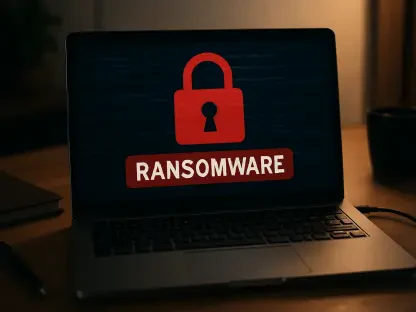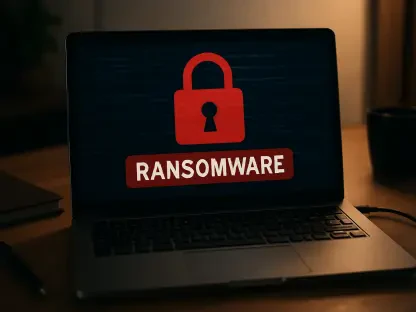In today’s rapidly evolving digital landscape, the rise of cyber threats challenges organizations to continuously reevaluate their security strategies. The zero-trust architecture (ZTA) has emerged as a pivotal framework that shifts focus from trusting users and devices inside a perimeter to assuming that no connection is secure. This paradigm requires constant verification and validation of each access request. As businesses expand their operations to include cloud technologies, remote work, and hybrid environments, the need for a zero-trust approach becomes increasingly apparent. However, many organizations struggle to assess their readiness for implementing such a comprehensive security model.
1. Understanding Zero-Trust Architecture
Zero-trust architecture fundamentally transforms the conventional cybersecurity model by removing implicit trust from systems. Unlike traditional security measures that rely on perimeter-based defenses, ZTA assumes that threats could emerge from within and outside the organization. Each user, device, and application is subject to continuous checks before granting access, aligning with the principle of “never trust, always verify.”
At its core, ZTA adopts several key principles: least privilege access, micro-segmentation, and the use of multifactor authentication. Least privilege access ensures users have the minimum levels of access necessary to perform their roles, reducing potential attack surfaces. Micro-segmentation divides networks into isolated segments, ensuring that even if one segment is compromised, the threat cannot easily spread. Multifactor authentication adds an extra layer of security by requiring multiple forms of verification from users.
Implementing zero-trust architecture necessitates a comprehensive understanding of an organization’s existing network infrastructure. This entails cataloging all assets, including hardware, software, applications, data, and services. By maintaining a clear inventory and evaluating current security technologies, organizations can identify opportunities to repurpose existing tools and minimize additional investments. However, shifting to a zero-trust mindset is not merely about technology but involves cultivating a culture that prioritizes security within the organization’s DNA.
2. Steps to Implement Zero-Trust Architecture
Embarking on the journey to zero trust is not an overnight transformation but involves a phased and strategic approach. The first step involves discovering and inventorying the existing environment to map out all organizational assets. This is crucial for understanding the full scope of resources needing protection. Following this, formulating an access policy based on these assets becomes essential. The policy should define who can access specific resources and under what circumstances, limiting permissions to the least privilege necessary.
Organizations must assess their current security capabilities to align with new zero-trust objectives. By thoroughly examining existing technologies, companies can identify which ones can be adapted for their zero-trust needs and where there are gaps. Addressing these gaps requires a risk-based approach, segmenting infrastructure to protect critical resources while ensuring robust policy enforcement. Preliminary implementation should focus on core components like identity, credential, and access management solutions, as well as adopting multifactor authentication. These foundational elements create a solid base upon which other zero-trust strategies can be built.
Continuous verification of these implementations is vital, as it involves monitoring network traffic to detect suspicious behavior and regularly testing ZTA policies to ensure effectiveness. Recognizing that the threat landscape is ever-changing, organizations should view the transition to zero trust as an ongoing process. It demands flexibility and adaptation to accommodate evolving threats, technological innovations, and changes in organizational needs.
3. Overcoming Challenges on the Zero-Trust Journey
While the advantages of zero-trust architecture are compelling, realizing these benefits necessitates overcoming a slew of challenges. One of the primary obstacles organizations face is the potential disruption to business operations during the transition. Implementing ZTA can require significant changes to existing infrastructure and processes, which may temporarily impact productivity. It is essential to carefully plan and manage this transition to minimize disruptions and ensure continued business operations.
Another challenge lies in securing organizational commitment to zero-trust principles throughout all levels of the company. Stakeholders at every tier, from executives to IT staff, must be convinced of the merits of the architecture and committed to its successful implementation. This necessitates clear communication, illustrating the potential security benefits, reduced risk exposures, and how these align with business goals.
It is crucial for organizations to remain vigilant against potential setbacks, such as legacy systems not compatible with ZTA technologies or difficulty in managing data spread over multiple environments. Addressing these issues requires strategic investments, training, and perhaps re-engineering certain operations. An agile approach that allows for course corrections ensures that companies effectively navigate these challenges while maintaining organizational resilience and security integrity.
Embracing a Zero-Trust Future
In the dynamic digital world of today, the increasing prevalence of cyber threats compels organizations to constantly revisit and update their security strategies. One effective approach that has gained prominence is the zero-trust architecture (ZTA). This framework marks a significant shift in security philosophy, moving away from the traditional notion of trusting users and devices simply because they are within a network perimeter. Instead, zero-trust assumes that no user or device can be trusted by default. Every access request requires thorough verification and authentication, regardless of where the request originates. As businesses widen their scope to include cloud services, remote work, and hybrid setups, the relevance of a zero-trust approach becomes even more critical. Yet, many organizations find it challenging to evaluate their preparedness for adopting such an all-encompassing security model. Implementing ZTA requires a thoughtful assessment of current infrastructures and practices to ensure seamless integration and maintain robust security.









